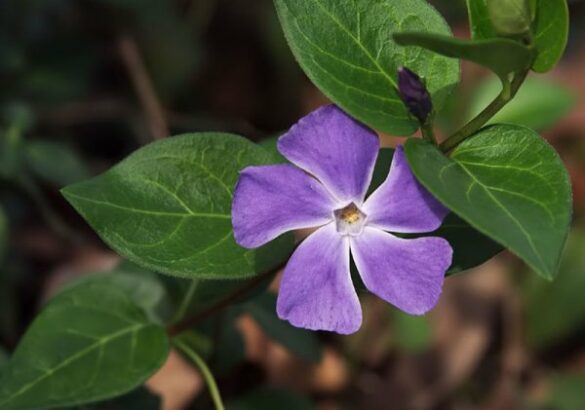Seems evil Russian computer hackers are not all that’s invading our world these days… In the botanical world, it’s all fun and games until somebody loses a species. You know what I’m sayin? As we think ahead to fall planting, we need to make sure we are planting good. Jan Merryweather of California’s PlantRight reached out to me recently about the serious mischief of invasive plants, the second biggest threat to biodiversity after people. Shocking! She’s here today to tell us more. Take it away Jan…
What’s the fuss? Invasive plants ravage native habitat, alter soil composition, clog waterways and provide dangerous fuel for wildfires. By stopping invasive plants we protect our wild lands and native critters, not to mention our tax dollars. California alone spends over $82 million each year battling invasive plants.
Menacing Mexican Feathergrass:
The photo above appeared in the Spring 2014 issue of Association of Professional Landscape Designers magazine. “Planting for the Future” article is here. The whole magazine is here. Mexican feathergrass is the plant that everyone has been falling for, yet they have no idea that this mature plant produces 70,000 to 100,000 seeds per year, and because it easily re-seeds, is bound to become the next pampas grass debacle unless we can cut it off at the pass. Thus the campaign!
What can we do? On the West Coast, learn about PlantRight and their campaign to stop California’s next plant invasion before it starts. They’re working with plant breeders, growers and retailers to phase out invasives voluntarily. See the CA plant list here.
In New York this past July, there was Invasive Species Awareness Week, with workshops statewide. New Jersey is also recruiting citizen scientists to join their Strike Team and nip invasives in the bud. In the South, the University of Georgia’s Center for Invasive Species and Ecosystem Health offers some wild (literally) ideas for dealing with invasive plants, post-invasion.
Many of our problem plants were introduced via the nursery chain. Not with mal intent, but simply because the plants were deemed beautiful or useful. (It seemed like a good idea at the time…) In California, examples include pampas grass, scotch broom and green fountain grass. In the Northeast, there is oriental bittersweet, barberry and purple loosestrife. In the South, kudzu !
Plants contribute spiritually, aesthetically and physically to our personal well-being and to our local economies. Let’s do what we can to help the good guys, and not the guys in these photos.
Vicious Vinca Major

See also this piece about PlantRight from the LA Times a few days ago. They are always copying me, I swear.
Thanks again, Jan!
Happy (Non-invaive) Planting, Readers!





A, I think, well meaning flower arranger in my N.C. neighborhood, brought a plant of Gooseneck. Pretty little white filler in a flower arrangement until it filled the county. It is up there with mint, kudzo and horseradish for rapid spread.
Great post! Don’t forget that native plants are also food for our native animals. When they get crowded out by the invasive plants, it leaves the food stocks depleted for our local animals. It’s a bit like going to the fridge and finding your yummy yoghurt replaced by chopped liver – and not the nice kind!
Very important information for us to be aware of. Thank you.
Hey Frances,
Such excitement ! So very glad about your book about Bee Cottage! So proud of you!!!!! As is all of Tarboro , I am certain.
We are heading to see Sallie next week. We then go to Paris and on to Provence. I rented an artist’s house, Isabel Petrovic, in Aix. It made me think of you! I am hoping to contact …is it Julie Steen? …..having a sr moment here….the artist who led your workshop. She is a friend of a friend of ours, Carolyn Meares in Richmond .
Do you have any advice or anything we shouldn’t miss? I do want to show Sam Villa Gallaci. Will ck out Les Violets but it may be $$$$$$$$$$$ now., if its still there ….Nancy and the priest in training may have set the place on fire! Lol!
Obviously this isn’t for publication. Lol!
Hope all is well with you and His Grace.
Hugs,
CC
PS. Bamboo is the curse of my garden along with Wisteria!!!!
Every Southerner in the world knows about wisteria…don’t EVER plant it, no matter how pretty it looks in Charleston. I’ve been trying to get rid of one plant for over 20 years, and it’s winning.
Thank you for adding more voices to this important and manageable topic, Frances. It may not be so easy to take a public stand on other issues these days, but I am wholehearted about this one. Seeing new birds and more lizards and bees at my studio since reintroducing native plants no my narrow strip of dirt makes me happy too.
I just took a landscaping class at Duke Gardens on invasive plants that are invading NC. I was sad to see crepe myrtles on the list especially as I had just planted several in my yard…. Awareness is important to protect the environment. Thx for bringing this up!
Thank you Miss Paige, but wow, I am surprised about the Crape/Crepe myrtles as well. Srsly? PS – I also was curious about the spelling, and found this: http://www.garden.com/garden-articles/is-it-crape-myrtle-or-crepe-myrtle/140/
xox Frances
Equal parts joy+honor to be included in the Fabulous Frances Schultz news/blog. Thank you for helping raise awareness about invasive plants and for helping us all design even more beautiful gardens! The PlantRight team is most grateful…as are all of California’s open spaces and native species.